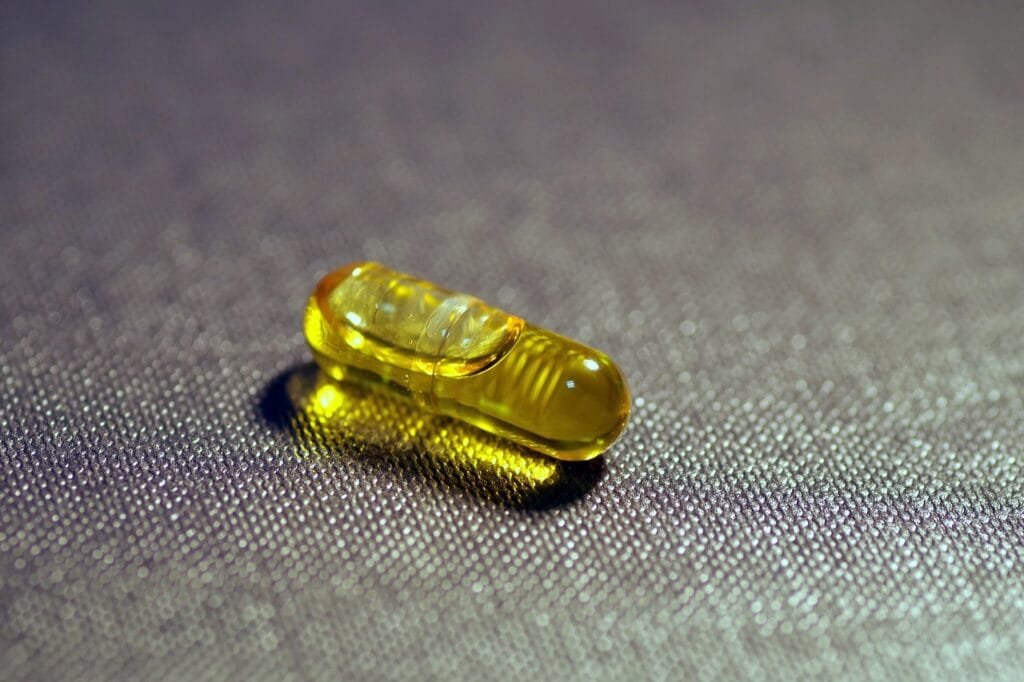Bifidobacterium bifidum: A probiotic with cardiovascular and metabolic benefits
Fermented foods have existed for centuries, not only because of their taste but also their added health benefits. In many cultures, especially in Asian countries, these probiotic foods have been essential to the diet. Researchers have continuously found improvements in health parameters when studying populations with high yogurt consumption and other probiotics. This finding is due to the improved gut microbiota provided by healthy bacteria in fermented foods. Now, the probiotic industry produces different microbial strains, each with its benefits.
One of the most intriguing probiotic strains is Bifidobacterium bifidum. This unique Actinobacteria, which thrives in the human intestinal tract and begins colonizing the gut at an early age, stands out for its ability to modulate various health parameters associated with cardiovascular health. It is specifically designed to prevent and, in some cases, improve cardiovascular disease, making it a key player in maintaining heart health.
This article is your comprehensive guide to Bifidobacterium bifidum, the probiotic powerhouse that can boost your heart and blood vessels. Depending on your current health, it could be the secret weapon you’ve been looking for.

What everyone should know about Bifidobacterium bifidum
Actinobacteria, such as Bifidobacterium bifidum, are all gram-positive bacteria. This particular strain, which is the shape of a rod and cannot move on its own, is strictly anaerobic, meaning that it survives in environments without much oxygen. It can be found in the human gut and other animals, and it is one of the first microorganisms to colonize the intestines after birth.
When the neonate comes in contact with Bifidobacterium bifidum, it promotes the gut’s physiological function and maturation. It makes up around 90% of the intestinal bacteria in the infant (1), and the proportion reduces significantly after reaching adulthood when it makes up around 2-14% (2). In the elderly, the number of Bifidobacterium bifidum is still reduced, partly explaining why people with cardiovascular disease tend to have a lower proportion of this bacteria.
However, the link goes beyond age groups. Studies show that patients with cardiovascular events have a tendency to decrease the abundance of bifidobacteria. But then, cardiovascular disease improved when the proportion of this bacteria increased. This led to a focused research on Bifidobacterium bifidum associated with cardiovascular outcomes. That’s how researchers found that this particular strain improves obesity problems, those derived from insulin deficiency and diabetes mellitus, and different parameters associated with cardiovascular problems, such as blood lipids and oxidative stress.
Benefits and applications of Bifidobacterium bifidum
Bifidobacterium bifidum is also known as B. bifidum, and we will refer to it this way from now on. Similar to other probiotics, this one has various benefits on the gastrointestinal tissue. It effectively counters diarrhea of different types and helps patients prevent watery stools during antibiotic therapy. It also improves other gastrointestinal problems, especially those associated with chronic inflammation and autoimmunity.
But let’s get beyond gut health and consider how B. bifidum can be an ally of your cardiovascular health.
B. bifidum reduces oxidative stress and prevents LDL oxidation
Free radicals are unstable substances that react with the cell wall, DNA, and other structures, robbing them of hydrogen molecules and causing microscopic damage. This is known as oxidative stress and causes mutations, cancer, organ dysfunction, and cardiovascular issues. When bad cholesterol, also known as LDL cholesterol, is modified by free radicals such as reactive oxygen species, they become oxidized LDL, which becomes foam cells and collects in blood vessels, causing atherosclerosis.
According to studies, B. bifidum can counter this problem by exerting potent antioxidant activity. The strain has multiple iron-binding sites and can chelate iron ions, which are fundamental for oxidation reactions. Also, the strain enhances the activity of innate antioxidant enzymes, such as catalase, which increases its transcription in the presence of B. bifidum. Additionally, the bacteria has metabolites such as folic acid and glutathione, which promote and maintain antioxidant effects in the body (5).
B. bifidum modulates immune overactivity and the inflammatory response
Inflammation is a trigger of cardiovascular disease. People with higher levels of inflammation are more likely to have atherosclerosis, myocardial infarction, and cerebrovascular disease. It is also a source of chronic diseases, including inflammatory bowel conditions, arthritis, and much more.
In this context, B. bifidum has an immunoregulatory action, modulating the immune response and reducing the inflammatory response. That’s why supplementing with B. bifidum improves health problems such as necrotizing enterocolitis and allergies in premature infants. Interestingly, metabolites of B. bifidum improve the immune response against pathogens, especially inside the gut, while reducing immune cell overactivity in the rest of the body. Consuming this probiotic may reduce cardiovascular risk in patients with metabolic syndrome (6).
B. bifidum improves the intestinal barrier, reducing leaky gut symptoms
Leaky gut syndrome is a problem with intestinal permeability. In normal circumstances, the intestines should be impermeable to proteins and bacteria in the intestinal lumen. Tight and adhesion junction proteins between cells are fundamental to achieving such impermeability. When there are not enough of these proteins, antigens reach the deep layers of the gut, activate immune cells, and start an inflammatory reaction that causes gut damage, chronic inflammation, abdominal discomfort, diarrhea, and more.
Bifidobacteria activate tight and adhesion junctions in the gut, upregulating their expression through metabolites, especially short-chain fatty acids. The bacteria form these molecules as a waste product, but they can be used in our bodies to protect and enhance the intestinal barrier and other aspects of immune function. Studies also show that improving our intestinal barrier can impact cardiovascular health by regulating systemic inflammation (7, 8).
B. bifidum may regulate appetite levels and help people control their weight
Obesity has different risk factors, including leptin imbalances, which lead to increased appetite. Leptin is a hormone synthesized in the gastrointestinal tract and body fat cells. When it reaches the brain, it triggers the satiation response. However, obese patients produce excess leptin, and after detecting such high levels, the brain responds with leptin resistance. More leptin will be required to cause satiation, causing an increase in appetite levels.
B. bifidum can reverse leptin resistance, change appetite levels in obese patients, and control weight. The exact mechanism by which bifidobacteria improves leptin signaling in the brain remains to be uncovered. However, it is probably related to reductions in the expression of inflammatory proteins such as interleukin 6, which worsen leptin signaling abnormalities. In addition to improving leptin sensitivity, B. bifidum also acts on ghrelin, a hormone that promotes hunger, reducing its levels and helping patients control their cravings (9, 10).
B. bifidum can improve lipid and glucose metabolism
Obesity is also related to abnormalities in lipid levels and insulin balance. Studies on bifidobacteria also show improved lipid profiles after consuming these probiotics. They upregulate genes of lipolytic enzymes that consume lipids and thermogenic genes that use energy to increase temperature levels. Fatty acid oxidation also increases, and our metabolism uses more fat as a source of energy. Additionally, bifidobacteria may also inhibit fat accumulation in the liver and increase cholesterol excretion.
Studies also show that glucose metabolism disorders improve significantly in parallel with lipid regulation. Different bifidobacteria strains have been used to enhance pancreatic beta cells’ insulin secretion and glucose homeostasis. This is good news for patients with metabolic syndrome, diabetes, and other cardiovascular risk factors, who can benefit greatly from consuming supplements with bifidobacteria (11, 12).
Conclusion and takeout
Bifidobacterium bifidum is a probiotic bacteria with the basic benefits you can find in probiotics, plus a few others that help you reduce your cardiovascular risk. It helps patients reduce the incidence of diarrhea, especially after using antibiotics extensively. It modulates gut microbiota and relieves abdominal discomfort and pain.
Apart from these functions, B. bifidum also provides antioxidant metabolites and modulates the immune system to reduce inflammation, reducing the risk of atherosclerosis. It may contribute to lowering lipid levels in the blood and regulating glucose in patients with insulin problems. It reduces leaky gut problems while contributing to promoting satiety and helping patients with obesity control their weight. For all of these, B. bifidum is considered by many specialists a critical part of the therapeutic tools to reduce cardiovascular risk factors in patients under multiple meds who want to avoid adverse events.
References:
- Harmsen, H. J., Wildeboer–Veloo, A. C., Raangs, G. C., Wagendorp, A. A., Klijn, N., Bindels, J. G., & Welling, G. W. (2000). Analysis of intestinal flora development in breast‐fed and formula‐fed infants by using molecular identification and detection methods. Journal of pediatric gastroenterology and nutrition, 30(1), 61-67.
- Odamaki, T., Kato, K., Sugahara, H., Hashikura, N., Takahashi, S., Xiao, J. Z., … & Osawa, R. (2016). Age-related changes in gut microbiota composition from newborn to centenarian: a cross-sectional study. BMC microbiology, 16, 1-12.
- Lakshmanan, A. P., Shatat, I. F., Zaidan, S., Jacob, S., Bangarusamy, D. K., Al-Abduljabbar, S., … & Terranegra, A. (2021). Bifidobacterium reduction is associated with high blood pressure in children with type 1 diabetes mellitus. Biomedicine & Pharmacotherapy, 140, 111736.
- Bernini, L. J., Simão, A. N. C., Alfieri, D. F., Lozovoy, M. A. B., Mari, N. L., de Souza, C. H. B., … & Costa, G. N. (2016). Beneficial effects of Bifidobacterium lactis on lipid profile and cytokines in patients with metabolic syndrome: A randomized trial. Effects of probiotics on metabolic syndrome. Nutrition, 32(6), 716-719.
- Wang Yang, W. Y., Wu YanPing, W. Y., Wang YuanYuan, W. Y., Xu Han, X. H., Mei XiaoQiang, M. X., Yu DongYou, Y. D., … & Li WeiFen, L. W. (2017). Antioxidant properties of probiotic bacteria.
- Alessandri, G., Ossiprandi, M. C., MacSharry, J., van Sinderen, D., & Ventura, M. (2019). Bifidobacterial dialogue with its human host and consequent modulation of the immune system. Frontiers in immunology, 10, 2348.
- Lewis, C. V. & Taylor, W. R. Intestinal barrier dysfunction as a therapeutic target for cardiovascular disease. Am. J. Physiol. Heart Circ. Physiol. 319, H1227–h1233 (2020).
- Cani, P. D., Possemiers, S., Van de Wiele, T., Guiot, Y., Everard, A., Rottier, O., … & Delzenne, N. M. (2009). Changes in gut microbiota control inflammation in obese mice through a mechanism involving GLP-2-driven improvement of gut permeability. Gut, 58(8), 1091-1103.
- Bagarolli, R. A., Tobar, N., Oliveira, A. G., Araújo, T. G., Carvalho, B. M., Rocha, G. Z., … & Saad, M. J. (2017). Probiotics modulate gut microbiota and improve insulin sensitivity in DIO mice. The Journal of nutritional biochemistry, 50, 16-25.
- Schellekens, H., Torres-Fuentes, C., van de Wouw, M., Long-Smith, C. M., Mitchell, A., Strain, C., … & Cryan, J. F. (2021). Bifidobacterium longum counters the effects of obesity: Partial successful translation from rodent to human. EBioMedicine, 63.
- Salazar, N., Neyrinck, A. M., Bindels, L. B., Druart, C., Ruas-Madiedo, P., Cani, P. D., … & Delzenne, N. M. (2019). Functional effects of EPS-producing bifidobacterium administration on energy metabolic alterations of diet-induced obese mice. Frontiers in microbiology, 10, 1809.
- Jiang, T., Li, Y., Li, L., Liang, T., Du, M., Yang, L., … & Wu, Q. (2022). Bifidobacterium longum 070103 fermented milk improve glucose and lipid metabolism disorders by regulating gut microbiota in mice. Nutrients, 14(19), 4050.
Read Other Articles on Nutrition, Click Here.




